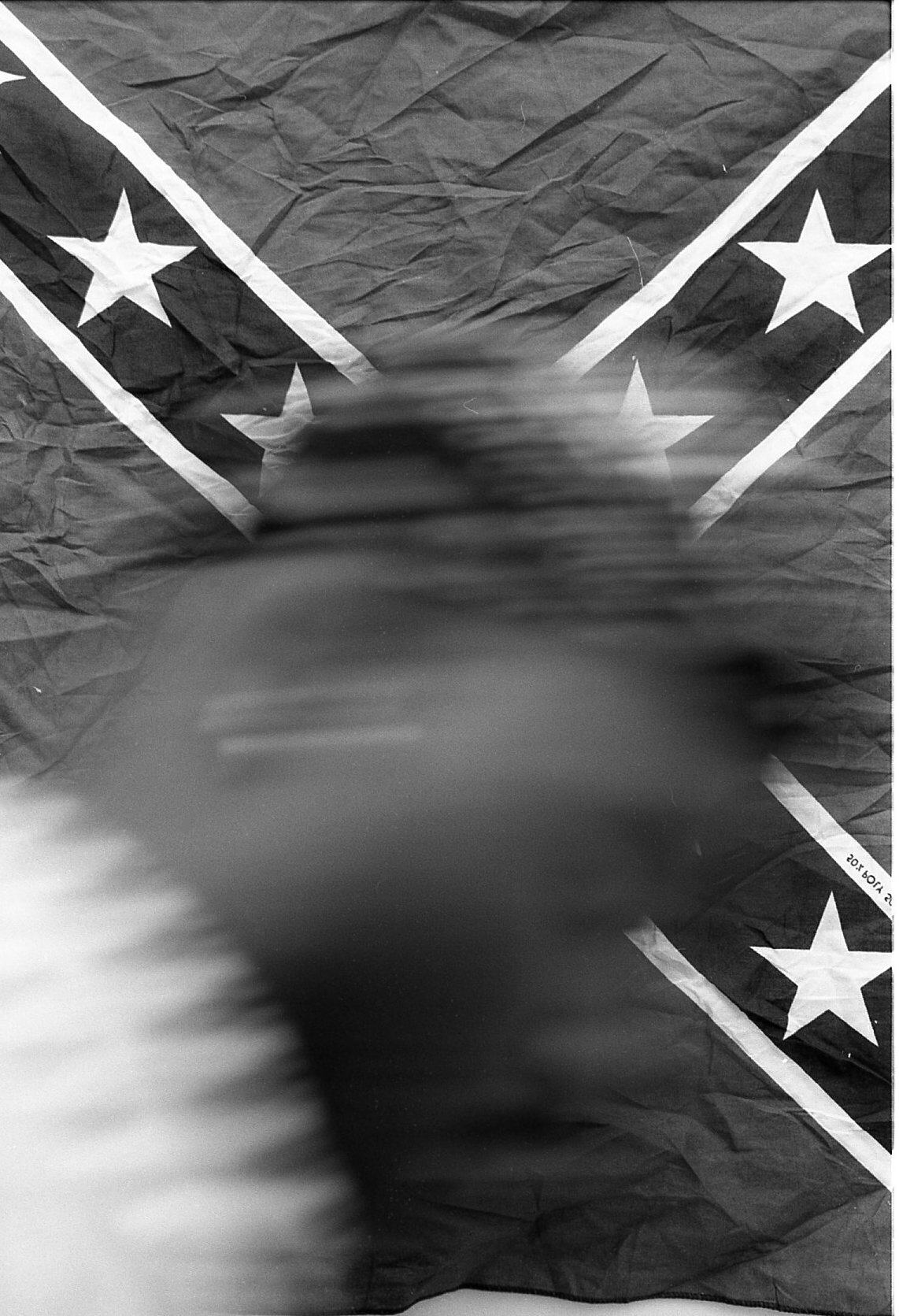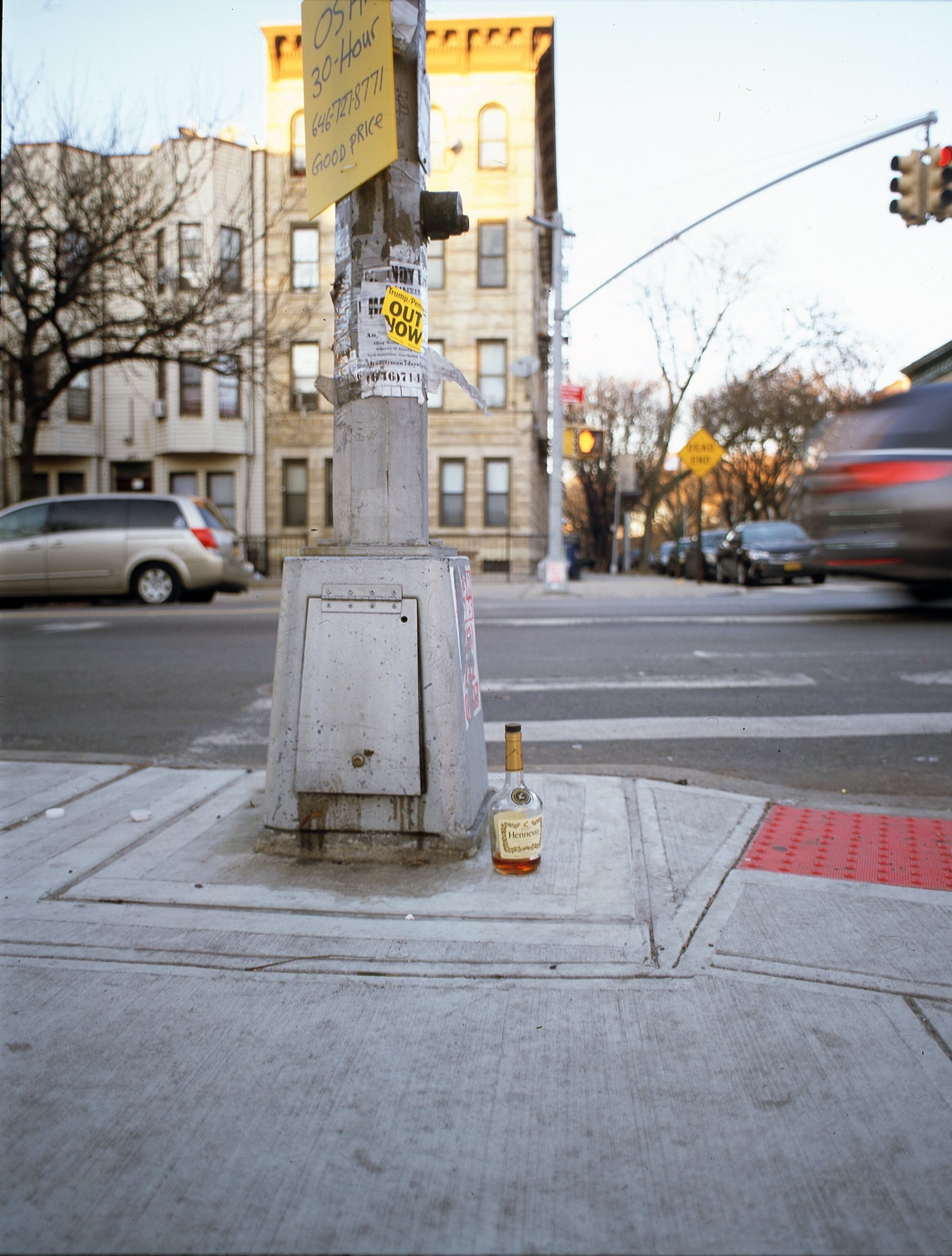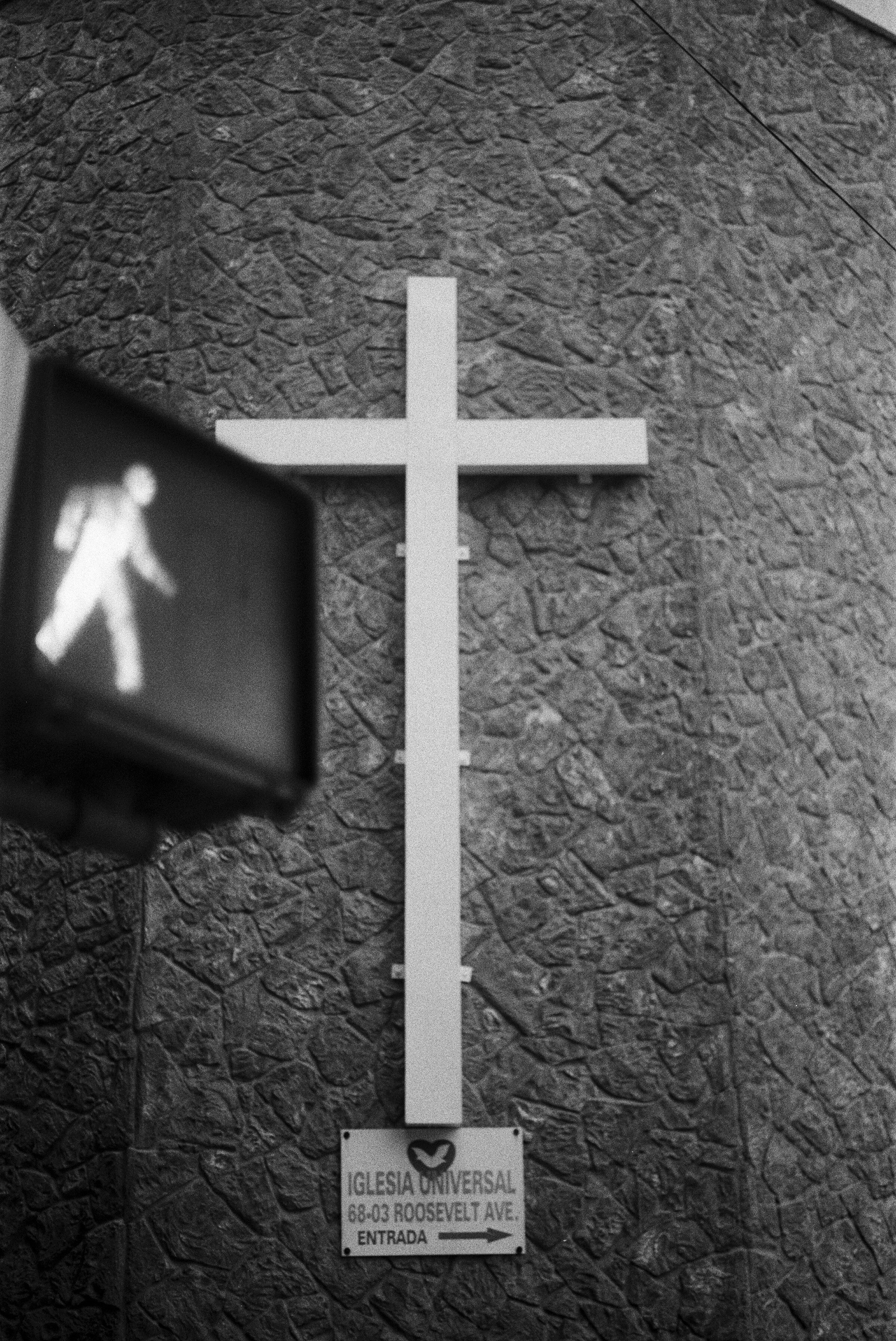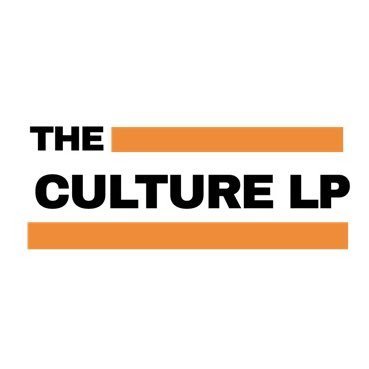Work in Progress is an interview series by independent curator, writer and cultural worker Alyssa Alexander, for The Culture LP, that spotlights an emerging or mid career artist. This series allows them to explore facets of their individual practices, share works in progress, and connect with overarching contemporary themes. Each iteration will have artists answer questions tailored to their work, but culminate with the same five questions.
Lamar Robillard is a photographer and multidisciplinary artist working in Brooklyn, New York. His practice largely investigates Black material culture - tangible objects that act as cultural signifiers - as well as the relationship that exists between these objects and “the Black psyche.” Spanning themes like: religion and colonialism, hip hop and pop culture, as well as the Black family dynamic, Robillard’s most recent body of work Soliloquy highlights an evolution of the artist’s work as he forays into sculpture and performance-based work, but also cements his aptitude at image making. Read on as we discuss the complexities of showcasing work online, forgiveness as a spiritual practice, the contemporary negro spiritual, and what will likely be the most epic group “Swag Surf”.
Lamar Robillard (LR): Okay, I’ll show you this first one. This is my favorite right now. It’s a stack of blades. You can touch it. It’s called Sharp. Can you guess what it’s about?
Alyssa Alexander (AA): I don’t want to. You tell me. [laughs]
LR: Okay. No one wants to guess. [laughs] So, my thesis is called Soliloquy, it’s an investigation of Black objects, Black materials and Black things in relationship with the Black psyche. This one is called Sharp and it’s also a part of a mini extension of that. Sharp, it’s about respectability politics.
AA: I see.
LR: Having to be sharp for interviews, also having to be sharp mentally for your competitor and also having to be sharp geographically, because if you live in Brownsville you need a higher level of alertness [than] someone that lives in Park Slope. This is a test, it’s going to be about a life-size stack. I like playing around with words and texts and using and trying to find figurative objects that work with it.
LR: These three are called Placement Paintings [A series of canvases, marked by the movement of paint-covered shoe soles over their surfaces]. More blackness and relationship to geography. I think, I don’t know, the reason it’s called Placement Paintings is because when I think of the Air Force One [Nike sneaker], I think of the hood, like naturally I think of...
AA: I think that’s so fantastic, I mean I immediately knew that those were Air Force One soles. I just wonder, is that like super niche, is that like Black s*** to know that?
LR: So, that’s my thing. With Soliloquy it’s beyond an investigation of Blackness and Black culture, and the relationship with the Black psyche. I’m also interested in these objects in relationship to the outside world, who aren’t Black.
AA: Right.
LR: So to me they are Black things, Black objects, but they also have a cultural significance, globally.
AA: Absolutely.
LR: And that’s what I think Soliloquy is. I think Soliloquy, by definition is speaking out loud, reciting something out loud. I think that’s what blackness is, because we yell and we scream a lot, we’re in outrage constantly but [laughs] it’s almost as if no one is really listening.
AA: It’s useless.
LR: I think with Soliloquy we build relationships with some of these things and some of these objects to protect and build this own belief of what it’s like to be us. Now these things have this massive relationship with us but also with the globe because they see it as us too, but my other question too is like is it Black or is it American? Because essentially everything that is American is Black. You know?
AA: Anything that is part of the fabric of American culture, or popular culture rather.
LR: And there’s other little aspects to it too like “stomp.” More of just like that.
AA: Oh you mean like traditional boot dancing? Yea it gave me that. I think of like how that translates to step teams, predominantly black colleges, or historically black colleges rather.
LR: See, you’re onto an extension of it. This is a test and I think this is what it will look like pitch-wise but the larger thing I’ve been thinking about is negro-spirituals, and songs today that resonate as negro-spirituals like Kendrick.
AA: The contemporary negro spiritual.
LR: Yeah. “Swag Surf.” So Swag surf is one of them that I think is really important so I think the goal is to have a really massive canvas display.
AA: Oh my God. That would be so f***ing fire.
LP: And welcome people to come swag surf and they step their foot in paint in Air Force Ones.
AA: I’m obsessed.
LR: So I’m really excited for that and I haven’t like set it up completely but I was reading W.E. Dubois and The Lives of Black Folks, and the section on negro spirituals and I was reading like “Oh s***, there’s something here.” The way that we respond to music. I remember like “Alright” just coming on anywhere and Black people just swarm.
AA: Across the years, I can think of the last time, was that within the Trump administration? I mean, I guess it was. I’m just thinking about the last time that I saw it, it was actually a First Saturday [a pre-COVID-19 monthly event at Brooklyn Museum], I just remember everybody like going up. It’s never been indicative of the times, it can be any circumstances like it’s just one of those songs that feels very…
LR: Home. Safe.
AA: Yeah.
LR: And it just grounds you to some degree.
AA: I don’t think our generation necessarily views the way we use music in the same way that previous generations have. We kind of think a negro-spiritual is like some weird antiquated thing that your mammy does or whatever. No different from the way y’all sing Future songs together. It’s exactly the same thing. It’s an important correlation to be made, because it’s about unity, it’s about like that sense of “I don’t know you, but I know you.”
LR: I think it still has that same relationship of just like coping. Music for us still has that, like the song is literally “Be Alright”, they are still negro-spirituals which is still very present and I am still very interested in bringing that back and figuring out how to swing that back to the present day.
AA: God, a group swag surf. I’m excited. You have to do it now. You have to do it.
LR: No, I’m definitely going to do it.




AA: Do you consider performance part of your practice?
LR: Yeah. I think I’m learning that as I’m continuing to create works that are a part of the practice and there’s just different elements, and I used my body a lot, I like to make things and be very physical and hands on. This one over here is another favorite and another part of the thesis. This one is called Screwface [a bust-like sculpture impaled with screws and nails]. Are you Caribbean?
AA: I’m from Grenada.
LR: So you know exactly what I’m talking about.
AA: I’m like giggling under the mask, you just can’t see.[laughs]
LR: So like more expanding on like that language, words, but also the materials being in direct conversation with the words. But for me, in a relationship with the black psyche, Screwface is like a mode of protection, it’s like when someone screws up their face you need to step back. Whatever you’re saying is foolish and I am done listening. [laughs] So just more on that, I think there’s like a lot of words, phrases, things that only we really know and people don’t fully understand. I’m also taking this as a time to unpack some of the things that we do and say.
AA: Absolutely.
LR: With this I was like this is actually a mode of protection, and all of it comes down to this mode of protection.
AA: Are you also referencing those like West African…
LR: Yes I am.
AA: Okay. Good, good, good.
LR: I think all of it plays a factor. I always try to -- I study a lot and I always try to make my works in conversation with some kind of past.
AA: Because this idea of protection and like the way it was so ingrained into previous iterations of our culture, like before they stole us and stuff. There are very specific things that were done like almost innately as a means of protection and that’s kind of lost on us now because we’ve had to kind of assimilate into other people’s ideas of protection.
LR: I felt like that too and I was very very apprehensive. But Black Christianity is something way different from Christianity and, actually, there’s this book that I’ve been reading, Blues People by Amiri Baraka and that’s slowly changing my mind in the last month.
AA: Interesting.
LR: This last piece, I think it’s pretty much gone, unfortunately you’re seeing it at its end. I’ll show you, have a look. I’m still deciding on a name, I’m not sure if it’s untitled. I think I’m leaning towards Lightness. [ A sculpture incorporating a vessel for holding incense sticks, placed on a canvas base]
AA: I see.
LR: This is what it looked like at first. I think when I display it I will put it on a high totem or column. As you burn them, the ashes kind of create this natural painting, which I’m going to let that become a painting of itself too. I was commissioned by my professor to create a work about forgiveness, that operates in a public and a private setting. I think it’s pushing me towards forgiveness because I was on their ass this last year. [laughs] I was like blacking and playing Farrakhan speeches and Dick Gregory and really just like I was really on it and he was like OK you really need to forgive. For me, I think forgiveness for people who are very strong and have been through a lot is not hard, it’s actually very easy for me to forgive. I’m just actively choosing not to.
AA: You’re deciding not to be.
LR: For me, with this I was like okay, my biggest issue is that I’m not too sure if my ancestors would be able to forgive me for making the same mistakes they made. This piece, I made it and I forgave myself and I forgave my ancestors but I haven’t forgiven the opposing side but it’s brought me a lot of peace too.
AA: That’s very important.
LR: I’ve forgiven at least ten or fifteen, because I get mad, I’m not going to lie. I just tell them don’t be f***ing with injustice, I don’t f*** with people who just on some bulls***. So I get really upset so I come down and I forgive them and it’s brought me a lot of peace. So I’m welcoming people to come into the space, and there’s one left, and forgive themselves or someone else. I thought incense is like very spiritual and forgiveness seems like a very spiritual or a higher form because you have to be very tapped in to release that and incense made the most sense to me. These two are closest to the ancestors. I think there are some more around here too. They’re all like a massive series and all like complementing. Forgiveness seems like prayer, just all of these tests and playing around with images that just like make sense. So you’re more than welcome to forgive yourself or someone else if you’d like.
AA: I will take that opportunity.
LR: I will give you a light.
AA: I’ll do it at the end, I don’t want to pause the audio.[laughs] This is a great place to start the five questions I think.
LR: For sure.
AA: Let’s do it! First question: which artist’s work are you currently most drawn to? Doesn’t have to be an artist working in the same medium.
LR: Oh, no.
AA: [laughing] Just like off the top, who are you obsessed with?
LR: Who am I obsessed with? There’s so many right now. I can’t think of who I’m obsessed with right now but David Hammons is like the God, Roy DeCarava for sure. Amiri Baraka for writing. There’s a few other people too and I’m drawing a blank. I’d like to mention those because they’re a really important part of my process and how I capture things or make things or how I look at materials and how I use materials.
AA: OK. If you weren’t working as an artist, what profession would you pursue?
LR: That’s a really good one. If I wasn’t working as an artist, what profession? I don’t know. I’ve tried many things; it would probably still have to be creative. Maybe art direction or creative direction, but that’s the same as being an artist, so…if I wasn’t an artist, I’d probably be an artist…
AA: [laughs]
LR: …if I’m being honest. I can’t think of anything else that I would want to do for the rest of my life that would make me happy because everything else seems like it comes with restrictions. Maybe community development, maybe programming.
AA: Ok!
LR: I’m really interested in landscapes and building and geography.
AA: Interesting. So maybe not infrastructure but urban planning.
LR: Yes, that’s the word I was looking for. Maybe urban planning.
AA: OK. In your opinion, what was the best moment for Black and brown artists and their work? A moment in history, not like a specific event…
LR: Sure. The Harlem Renaissance.
AA: Yes!
LR: The Harlem Renaissance brought a lot of phenomenal artists and it put us on the map. Everyone was an activist, they were super, super intellectual, all of the phenomenal jazz musicians, all of the Black artists from the Black arts movements came out of that time. I would say it would have to be the Harlem Renaissance... that’s like elite. I’m from New York, I’m from Brooklyn, I’m from Flatbush but if there was one other place in the world where I could live, well apart from Berlin… No. Berlin wouldn’t count. If there was one other place I could live in New York it would be Harlem because of Harlem’s history with Civil Rights Movement and just being on time and I just really, really f*** with people who are really educated and really tapped in and aware and don’t take no bulls***.
AA: What was the last work that made you feel something?
LR: Wow that’s really tough because I haven’t been able to go to shows, we’ve just been stuck in here. What is the last work that’s made me feel something? That’s hard. I don’t know. I don’t know. I think my own shit.
AA: [laughs] I think that’s a valid answer.
LR: I think my own stuff or like maybe the stuff that I’m dreaming of. But, yeah I don’t know, I’m drawing a blank because I haven’t been able to see shows because of COVID. I think I’ve seen a few things online but I’m not interested in engaging with that online, I feel like it’s too restrictive. I’m such a nerd about this art shit and about everything that like I go really close to paintings or really close to artwork and see how it’s made. Like I’m impressed with the end result but I’m more impressed by how it’s made…
AA: The whole process.
LR: …what it’s made of, how it’s hung. I will literally put my eye so close to the wall to see what it’s hanging on or like…
AA: I’ve done that! As recent as yesterday, I went to the Brooklyn Museum and Jeffrey Gibson, I don’t know where this man is getting his frames fabricated. It’s nuts, I’ve never seen framing done like that. I had to get real close to it. Like how? I can’t figure it out. But yeah, I think that, as someone who…because you use so much of your body in your work that makes sense to me, that you wouldn’t be viewing it from an audience standpoint. You’re almost like “I need to know what went into this before I can decide.”
LR: Sorry, before I can answer that last question, I’m trying to remember. I remember Liz Johnson Artur’s work at Brooklyn Museum which is elite.
AA: Yes!… I know what you’re talking about, I saw that as well.
LR: Also Sanford Biggers.
AA: He has a show that just opened in his Chelsea gallery. He’s very similar in that thought process of the idea of a “Black object,” like his whole quilt series.
LR: Yes.
AA: All these things that are like totems of Blackness and we don’t have that.
LR: We don’t. We don’t.
AA: We don’t have this like material culture that exists in history. Everything is kind of like co-opted or we don’t have anything, whereas other cultures have physical like remnants.
LR: Yeah. And the thing is like we don’t, but we really do.
AA: Yes, exactly. It’s just not recognized.
LR: Everyone else sees theirs. We just haven’t labelled things yet…
AA: Exactly.
LR: …or identified like “we’re going to make this that.”
AA: Exactly. So, having said all that, how, if at all, will your practice transform as we move towards a more digital-based market? You don’t like interacting with work online.
LR: No, I don’t. As we move towards a more digital-based market, I will probably be more subversive, I’m not interested in a digital… I’ve been invited to show in online shows and I’ve respectfully declined. I’m not interested in it at all. If it’s not going to be in real life, I just don’t care. Other people will either come to my studio or ask and I’ll probably say no. I’m not interested and I don’t intend on conforming just because of capitalism and however the art market or the art world decides to transition…I will only do online shows if they also exist in space and people are welcome, people can come and see the show in space, but I’m not interested in doing anything online, only online.
AA: … I mean, not for nothing, photography is something that I think most people consider accessible via digital. That’s like a no brainer. But I told you myself when I saw the images that you sent in the WeTransfer versus in person, it’s completely different.
LR: It’s completely different.
AA: It’s a ridiculously different experience, scale, all of that matters, the texture and the grain in person it’s not… it just doesn’t translate. It’s something that everyone knows but kind of ignores I think because we’re in this mad dash to just buy stuff.
LR: Yeah.
AA: Like, well we can’t go in person so I’m going to create a 3D version of the gallery and you can walk through it that way, and it’s like a little unsettling to believe that’s something that we should be moving towards and not just using in the moment.
LR: Yes. I 100% agree and a lot of artwork is not online anyway, I have no intentions of being an online artist. I don’t have any intentions of being an Instagram artist and sharing too much. You see, I post a lot of memes every day. I’m a very serious person, but I’m also a very silly person. [laughs] I enjoy having fun, I enjoy trolling people. But when it comes to the art, I’m very serious and I’m very traditional in some aspects where It’s like, my work is going to exist in spaces and in studio and in homes and if you’d like to see it, those are the only places you can really see it. I’m debating on a website; I have a website but none of my work is on it. I know people steal and take, especially from young emerging artists and I’m very…
AA: There are ways around that though, you just have to password protect. I mean, I have that with my personal website. There are projects that have not actually been brought to fruition, they’re just ideas, but I’m not even going to put that on my website somewhere you could just decide to take it. I have to give you a password for you to look at it, but even then there’s still trepidation. You know what I mean?
LR: I’m just not interested. I am honestly trying to prove to artists and others that you can be a successful artist without having to post your work. That’s my goal, it’s to be super successful without having to post much, but like giving studio visits, maybe a few things like being in the shows, being present in the right time and it’s going in that direction and I just can’t wait until like “Yep. I’m here.” and I didn’t have to post.
AA: I get it.
LR: And I think that’s really important…
AA: It is. It’s incredibly important.
LR: …to keep artistic integrity.
AA: Because I think that we’ve got into a space where everything just has to be on demand, on my phone, I need to see it now and there’s a real departure from, as you were saying, a traditional idea, like a studio visit, like this is an artist I like, I want to buy something. And I’m guilty of it. I bought prints from COVID relief sales all year.
LR: I think any form of collecting is fine because you’re putting money in the artist’s pocket where it needs to be.
LR: [gestures] The hanging bottle is called Cultural Object 1 now.
AA: Cultural Object.
LR: I think you came to the first day of the show, right?
AA: I came the second day.
LR: The second day? OK. As the show went on, I learned more things about the show. So now when I display it… everyone who buys it has to buy… it comes with the bottle…
LR: …and you have to display it how it’s shown. What I’m going to do next, when I show it again at some point, the floating shelf is going to be concrete. So the “block” is in the gallery.
AA: Oh, I love that. The block is in the gallery.
LR: Yeah, I’m really excited about that.
LR: Yeah I’m putting my n****s in here.[laughs].
AA: That’s amazing.
LR: Essentially, I’m doing this for my n****s man.
Photo Credits:
Artist portrait: Sidra Greene Photography, 2020
Install shot of Juice, by Brandon Desouza


